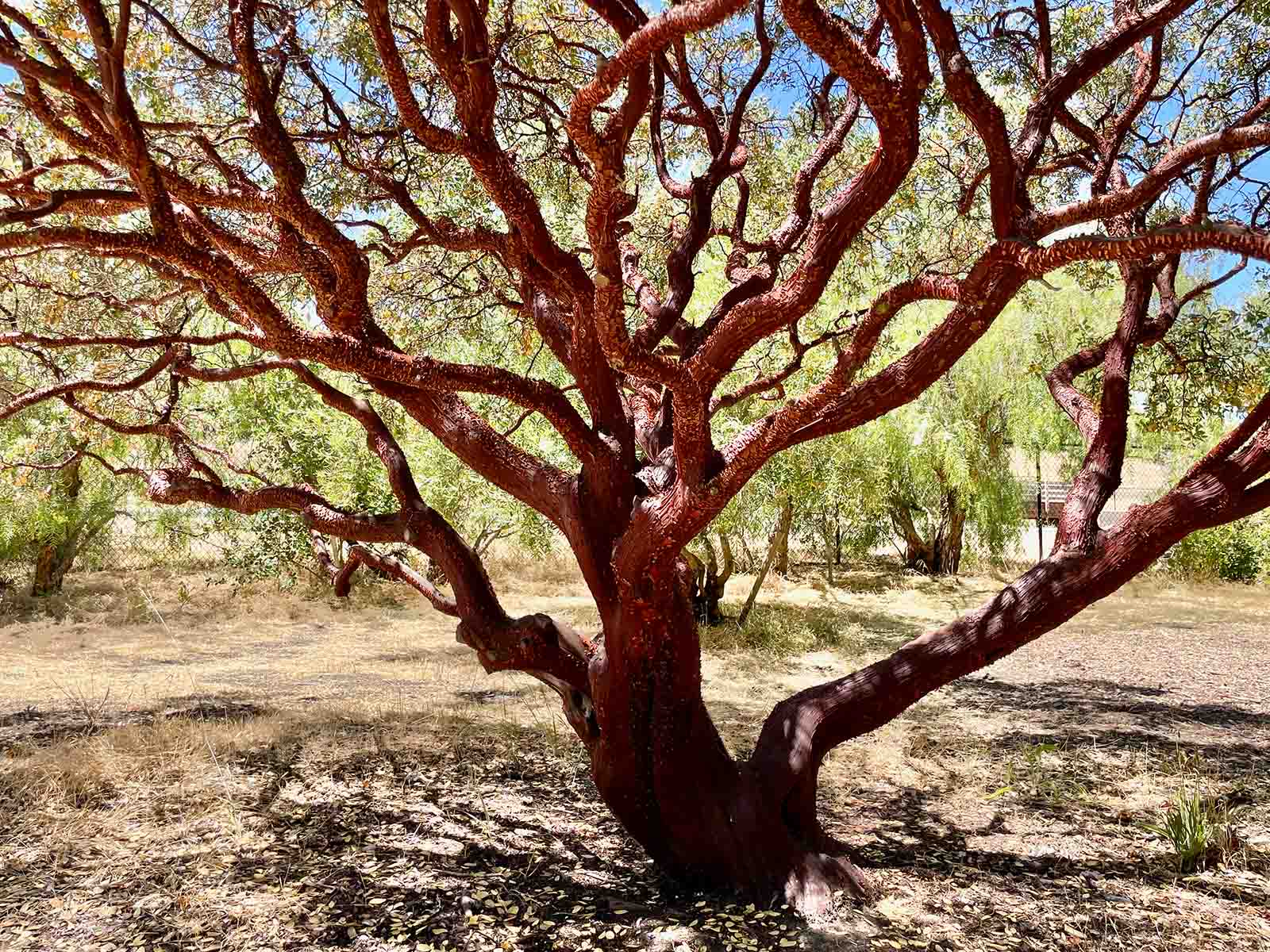Arctostaphylos manzanita
 manzanita
manzanita
See tree-sized specimens of Arctostaphylos manzanita in the Junipero Serra Boulevard greenbelt east of Stanford Avenue. There is nothing straight about this 6- to 20-foot-tall native plant; the crooked branches are covered with attractive deep-red bark. Two dramatic specimens of the ‘Dr. Hurd’ variety crowd each other in the inner courtyard of the Center for Advanced Study in the Behavioral Sciences.
A 2006 planting of another tree-form manzanita, big-berry manzanita (Arctostaphylos glauca), is in the California Garden at Roth Way and Lomita Street. Cultivated varieties of the related California native A. densiflora are widely planted as low to medium-high hedges.
Manzanitas normally have pale-pink to white, urn-shaped flowers resembling those of Arbutus species. The large red berries are edible, were eaten by Native Americans, and are tasty to bears, which is where the connection with the Arctic comes in. From the Greek viewpoint, bears inhabited the north (arktos means bear and also the constellation of the Great Bear, Ursa Major). Staphylos meant, and still means, grape; hence the common name bear-berry. There are probably 75 native species in California, many of which grow in the Regional Parks Botanic Garden in Tilden Park and other local botanical gardens and arboreta.
Illustrations: A. m. ‘Dr. Hurd’ habit | January 2004 bloom.
Name derivation: Arctostaphylos – from two Greek words arktos, bear, and staphule, a bunch of grapes; glauca – from the Greek for bluish-gray. California Plant Names: Latin and Greek Meanings and Derivations, Compiled by Michael L. Charters.
Related material: SHRF Plant Culture Data Sheets for Arctostaphylos | treatment from the Jepson Manual.
About this Entry: The main text of this entry is from the A. manzanita entry in the book Trees of Stanford and Environs, by Ronald Bracewell, published 2005. John Rawlings made minor edits and added the A. glauca and ’Dr Hurd’ notes. Minor edits; main entry title reverted to A. m. (Jan 2024, SP).




